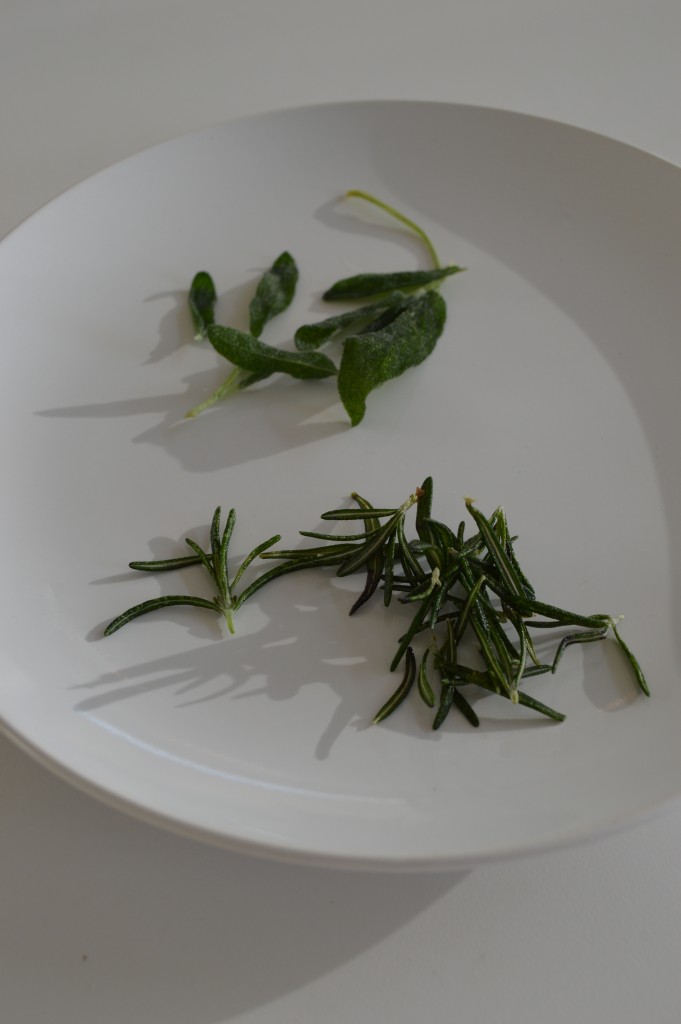Last night I ate out at an Italian restaurant, one of them new-fangled Italian joints that have hardly any tomato sauce on the menu, and nary a checkered table-cloth or plastic grape vine in sight. I had a bowl of squash tortelloni with brown butter and sage, a classic dish from the hallowed kitchens of Emilia-Romagna. The sage was raw.
People usually freak out over raw chicken, not raw herbs, but eating those fuzzy, grey, acrid sage leaves was at least as unpleasant as contracting salmonella.
Chefs distinguish between fine herbs and resinous herbs. Fine herbs are delicate and usually eaten raw. Examples are basil, parsley, chervil, and tarragon. Resinous herbs are more robust and are usually cooked. Examples are rosemary, thyme, oregano, marjoram, savoury, and most definitely sage.
We cook resinous herbs because they are chewy and harsh when raw. If you would like to use a large piece of resinous herb like sage as a garnish, it absolutely needs to be cooked in oil or butter, after which it will be delicate, crisp, and vibrant in colour.
The herbs should be cooked rapidly and thoroughly. The oil should jump to a lively sizzle as soon as the herbs are added. Rapid cooking will preserve colour, and thorough cooking will eliminate all moisture and ensure the herbs are crisp and not at all chewy. The frying is complete when the oil no longer bubbles vigorously around the herbs.
When you fry herbs you are not only crisping the herb, you are also flavouring the oil or butter. Not to the extent of a concentrated herb oil, but enough to make a great sauce. Squash tortelloni with brown butter and sage being a classic example.
